What's inside
In the world of resistance training, several specialized sports have developed over the years.
Some athletes want to prove themselves by lifting the most weight possible. Others strive to attain the most aesthetic physique.
While bodybuilders, powerlifters, and Olympic lifters are all strong, they use different training methods.
For the average gym-goer, however, both strength and size are common training goals.
Taking advantage of both styles of training, a powerbuilding workout targets both maximal strength and muscle hypertrophy.
This article contains everything you need to know about powerbuilding as a style of training, including the pros, cons, and tips for how to succeed.
We also have a template for a 12 week powerbuilding program for you to try, whether you’re a novice or advanced trainee.
Keep reading to get the full rundown.
What is powerbuilding?
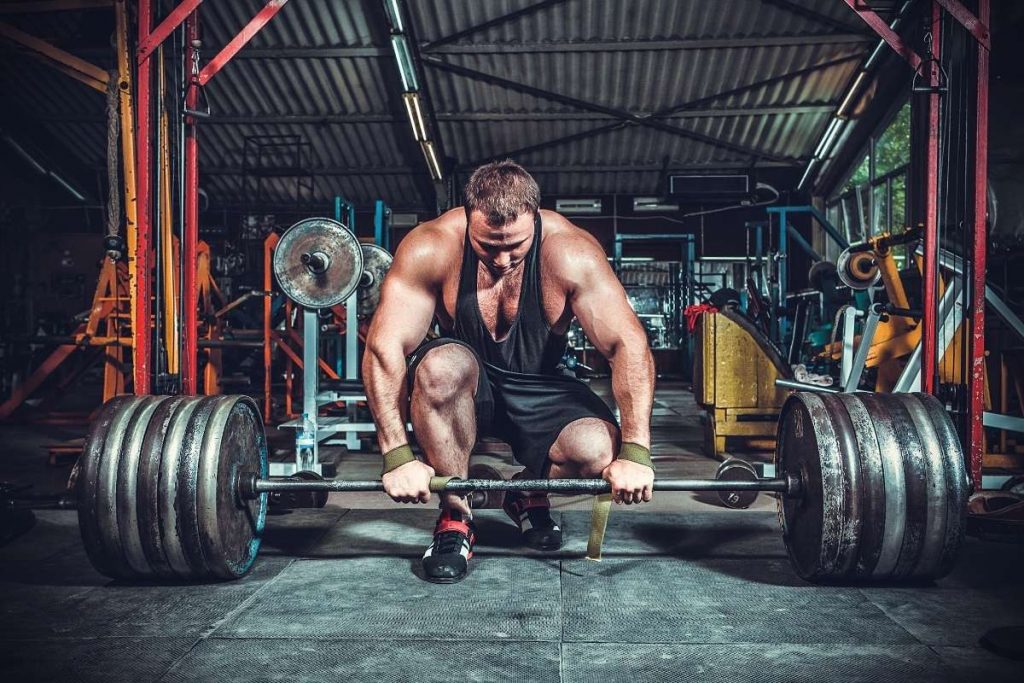
Powerbuilding is a style of training that combines aspects of both powerlifting and bodybuilding.
Powerbuilding isn’t a sport like powerlifting and bodybuilding but combines aspects of both training styles into one. It contains the big three lifts of powerlifting – the barbell squat, deadlift, and bench press.
It also contains a range of accessory and isolation exercises to develop the size and definition of many smaller muscle groups.
Another way to look at powerbuilding is that it’s a combination of training for muscle hypertrophy and maximal strength at the same time.
While some athletic programs will periodize these two goals with a hypertrophy phase and a strength phase, powerbuilding attempts to progress them simultaneously.
The next section will explore the factors that go into deciding whether a powerbuilding program is suitable for your goals.
Is a Powerbuilding Program Right for Me? Some Factors to Consider
See Also: Why Do Bodybuilders Tan?
Training Goals
By now, you know that powerbuilding involves a combination of maximal strength work and hypertrophy training.
If these are both metrics you’re looking to improve, then by all means, a powerbuilding program is something to consider.
These programs do combine the difficulty of heavy lifting with the challenge of pushing to failure on the accessory lifts – so keep that in mind, too.
Fitness Level
Powerbuilding can be done by trainees of different training ages, just with some minor changes.
In a minute I’ll share powerbuilding workouts that suit beginner and more advanced-level lifters.
As long as you start with weights that allow you to build up and perfect technique first, you’ll have success with these programs.
Recovery Ability
Recovery is key in a powerbuilding program. Not only do your muscles have to recover but your central nervous system will be fatigued from lifting heavy loads.
See the tips later on for maximizing your nutrition, rest, and recovery to ensure success with a powerbuilding program.
Number of Exercises Per Day
The workouts in this article may look scarce in terms of the number of exercises.
This is because they always contain one or several heavy compound lifts.
To ensure you can complete the repetitions while increasing the weight, long inter-set rest periods are required.
There’s also only going to be a limited amount of gas left in the tank after these lifts to work on your hypertrophy exercises, so an additional six exercises would be wasted.
Types of Training Splits
While powerbuilding is mostly concerned with the in-session volume and intensity of training, you still need to consider the weekly training cycle.
Powerbuilding programs can be built around different training splits, depending on how many days you have available to train.
The powerbuilding programs in this article are a 3-day full-body routine for beginners and a 4-day split for more advanced lifters.
A powerbuilding split can train both strength and hypertrophy in each session, like the programs here, or it can alternate powerlifting and hypertrophy sessions.
Next, we’ll provide further distinction between the sports of powerlifting and bodybuilding, and how powerbuilding combines the two.
What is the difference between powerbuilding, powerlifting, and bodybuilding?
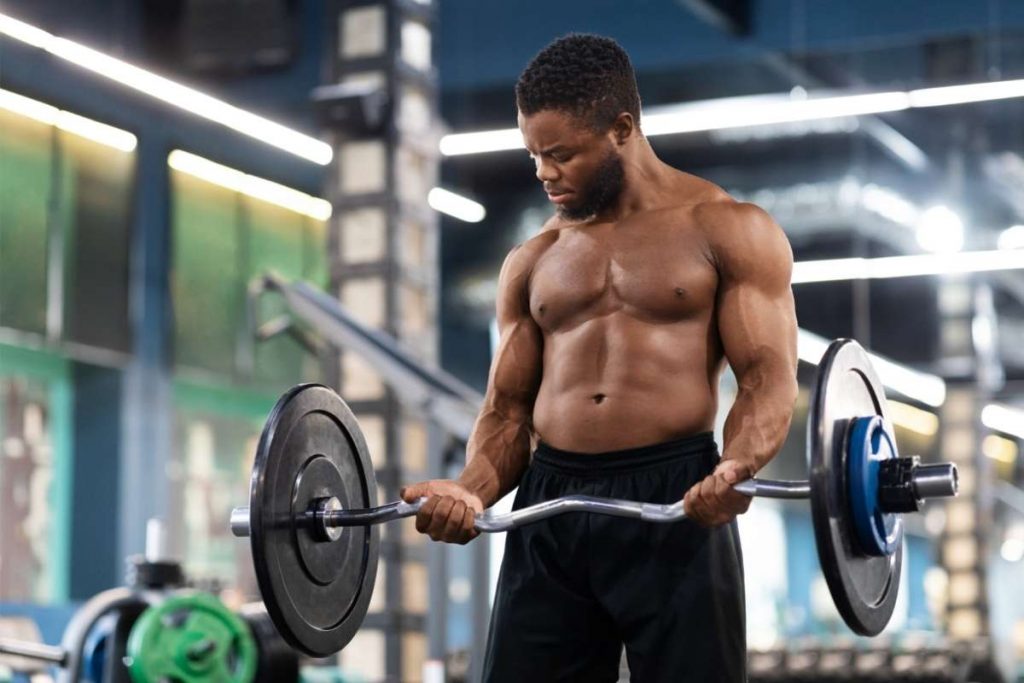
Powerlifting Fundamentals
Powerlifting is the sport of performing three lifts – the squat, deadlift, and bench press.
In a powerlifting competition, an athlete gets three attempts at each lift to move the most weight possible for one maximal repetition.
The total weight for each of the three lifts is then combined for the total score.
Strict technique guidelines must be met for a lift to be counted, and most competitions have rules and restrictions on what equipment can be used.
Powerlifters do train accessory exercises for muscle growth, but their main focus is on heavy strength training in these big lifts.
A quick mention here should be given to Olympic lifting. These athletes focus more on explosive power, as they compete in the clean and jerk and snatch lifts.
Bodybuilding Fundamentals
Related: Muscle Gain Workout Plan With PDF
The sport of professional bodybuilding is completely different from powerlifting.
Competitive bodybuilding is set around aesthetics in a range of various poses. Athletes are judged on proportions, muscle size, and definition.
Like in powerlifting, there are different categories of competition. Here, they’re based on different types of physique.
Categories in bodybuilding competition include opens, classic, physique, and multiple categories for female athletes.
Bodybuilding classes have different rules and regulations to do with weight class and performance-enhancing substances.
Training for bodybuilding can involve heavy lifting, but also includes much more isolation work on individual muscle groups to shape and define them as needed.
Bodybuilders also cut down to extremely low levels of body fat for competition, meaning they have phases of bulking and cutting depending on the time of year.
Powerlifters, on the other hand, are able to simply eat to sustain strength gains and aren’t concerned with accumulating some excess body fat.
Powerbuilding Fundamentals
Powerbuilding is not a competitive sport like powerlifting or bodybuilding.
A powerbuilding program will contain the three powerlifting movements along with any supplementary exercises needed to build a good physique.
An individual looking to do a powerbuilding program also has to consider nutrition and body fat levels. This is because they’ll want to get stronger without adding excess fat.
Overall, a powerbuilding program is a good balance of training for those who aren’t necessarily looking to compete but want to be strong and look muscular.
What are the common benefits of any powerbuilding program?
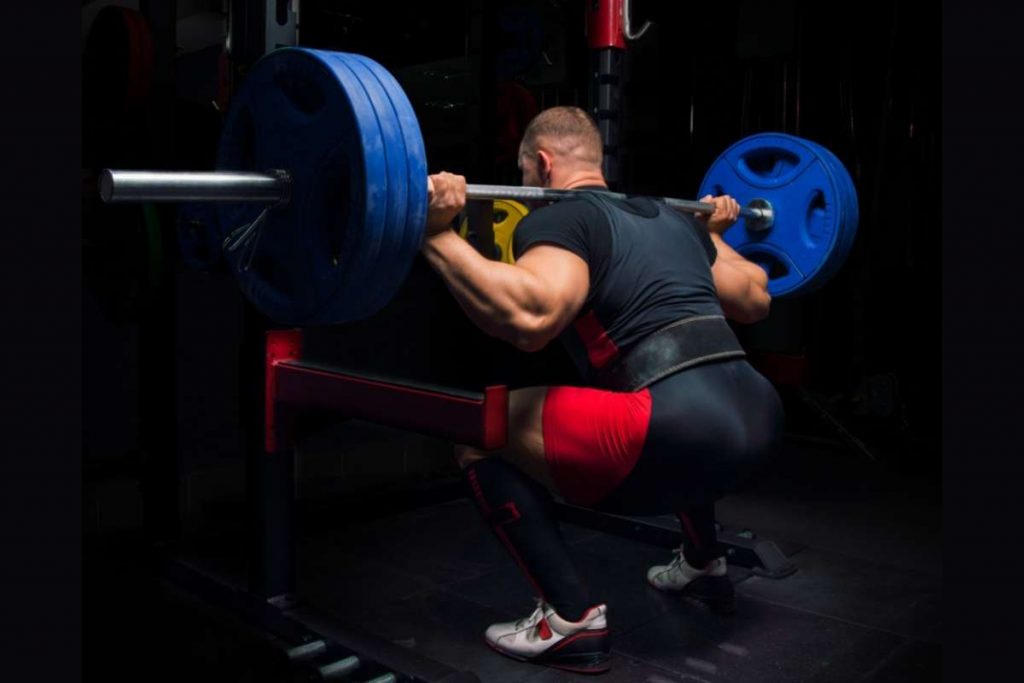
Workout Efficiency
The first advantage of powerbuilding programs is that you can train for multiple targets in a single program.
Training for strength and hypertrophy in one program also requires adequate recovery periods, meaning fewer overall days in the gym.
While the sessions in a powerbuilding program can be longer due to inter-set rest times, there will be less overall training time required during the week.
Workout Variation
A powerbuilding workout program can look different depending on the individual.
Each session can contain something different, whether it be different muscle groups or training methods.
Whether you alternate strength and mass training, or combine the two (as we do in the workouts in this article), there’s good variation.
A powerbuilding program is also flexible in terms of using autoregulation. This means setting your weights based on your energy levels on a given day.
Gaining Strength and Size
Of course, the biggest benefit of a powerbuilding program is the ability to get stronger while adding muscle mass.
Because maximal strength training stimulates the nervous system, it is possible to get stronger without adding muscle size.
Likewise, hypertrophy training can be done with light to moderate weights, providing the environment for muscle hypertrophy without being able to lift heavier.
A powerbuilding program aims to combine what would normally be split into different training cycles.
While not ideal for athletes who want to maximize gains in either category, it’s perfect for people who want to look – and actually be – stronger.
The Best Exercises to Include in Any Powerbuilding Program

The following exercises make up the foundation of a powerbuilding program.
This list includes the three powerlifting exercises – squat, deadlift, and bench press – as well as several isolation exercises.
The bicep curl, tricep extension, and calf raise all recruit specific muscle groups as prime movers of the joint.
The list also includes the barbell row and military press, as these are also fundamental strength developers for the back and shoulders.
As long as these foundational exercises are performed in a powerbuilding workout program, many other exercises can be included as needed.
- Barbell Squat
- Deadlift
- Bench Press
- Barbell Row
- Military Press
- Calf Raise
- Barbell Bicep Curl
- Lying Triceps Extension
1. Barbell Squat
The first of the powerlifting exercises in this list is the barbell squat.
A fundamental strength exercise for the legs and trunk, the squat forms the basis of your lower body strength gains in this program.
Equipment Requirements: Barbell, plates, power rack / squat rack
How-To Perform Barbell Squats:
- Set the bar at shoulder height and load weight plus safety clips
- Set up with the bar across back of shoulders with a comfortable grip
- Unrack the weight by standing tall and stepping back (or forward)
- Keep the torso upright and sit the hips back to lower down into the squat
- Lower until thighs are at least parallel to the floor
- Breathe out and push up to starting position
- After final repetition, carefully rack weight
Benefits: Complete lower body and truck strengthener, functional exercise
Pro Tips: Experiment with high or low bar position to see what feels better and allows more power generation.
2. Deadlift
The next powerlifting exercise is the deadlift. This athletic movement forms the strength foundation for so many other strength exercises.
The deadlift will strengthen the posterior chain, from the hamstrings and glutes to the upper and lower back.
Equipment Requirements: Barbell, plates
How-To Perform Deadlifts:
- Stand with shins to barbell with the desired stance
- Hold the bar with a standard, alternate, or hook grip with straight arms
- Bend the knees and sit back into the heels
- Push through the ground, exhale, and stand up straight
- Drive the hips forward into the bar at the top of the movement
- Slowly control to starting position with a neutral spine
- Maintain control until final rep
Benefits: Recruits entire posterior chain, utilizes upper and lower body together
Pro Tips: Check out our article on hook grip for a detailed guide to increasing deadlift strength.
3. Bench Press
To complete the big three powerlifting exercises, we have the classic barbell bench press.
With slightly different form than the bodybuilding bench press, the goal here is to press as much weight as possible.
This exercise will develop strength in the chest, shoulders, and triceps.
Equipment Requirements: Barbell, plates, rack, bench
How-To Perform Bench Press:
- Lay on the bench with eyes under the bar
- Unrack the barbell from the frame
- Inhale and lower the bar to mid-chest level with control
- Forcefully exhale and use the chest to lift bar until the arms are straight
- Perform desired number of repetitions
- Safely re-rack the bar before disengaging body
Benefits: Balance between stability and freedom of movement good for strength development
Pro Tips: Techniques like an exaggerated back arch and wide grip are characteristics of the powerlifting-style bench press.
4. Barbell Row
While not technically a powerlifting exercise, the barbell row is one of the best maximal strength builders for the upper back.
If you want strong traps, lats, and an iron grip, the bent row should be a staple in your powerbuilding program.
Equipment Requirements: Barbell, plates
How-To Perform Barbell Row:
- Stand in front of barbell with hip to shoulder-width stance
- Grab bar outside the legs
- Flatten back and lean back into heels with straight legs
- Brace the core and breathe out to pull bar into lower chest
- Hold with control and squeeze shoulder blades together
- Control the bar back to the bottom position
Benefits: Added hamstring and lower back stabilization while performing the movement
Pro Tips: If you don’t have the hamstring flexibility to row from the floor, try a combination of supported rows and straight leg deadlifts to build up to this exercise.
5. Military Press
The military press is another barbell strength movement that provides a transition from powerlifting to Olympic lifting.
Overhead pressing requires strength through the entire body, from the ground up.
If you want to progress to more advanced exercises, building strength in the military press can lead to a solid foundation for the jerk and snatch exercises.
Equipment Requirements: Barbell, plates
How-To Perform Military Press:
- Stand with the bar at shoulder height on a power rack
- Grab the bar at shoulder width or slightly wider position
- Unrack the bar to the collarbone
- Exhale and push the bar up, retracting your head from the bar’s path
- Inhale and slowly control bar back to starting position
- Repeat desired reps and step forward to re-rack the weight
Benefits: Standing exercise is more athletic, translates well to Olympic lifts like jerk and snatch
Pro Tips: This move can be done with a square or staggered stance, so pick one depending on your goals.
6. Calf Raises
While the squat alone can develop impressive strength and size in the legs, one muscle group doesn’t get quite enough engagement.
For this reason, a powerbuilding workout should include the calf raise to focus on ankle plantar flexion.
Calf raises can be done with straight legs to hit the outer gastrocnemius muscle, or with bent knees to target the deeper soleus calf muscle.
Equipment Requirements: Calf raise machine, smith machine, or dumbbells
How-To Perform Calf Raises:
- Set the shoulder pads to the appropriate height
- Step onto the plate with the shoulders under the pads
- Hold the handles and assume a strong posture
- Stand up to take the slack of the weights
- Lock the knees straight and lower the heels toward the floor
- Pause for a brief stretch
- Drive through the balls of the feet to flex the ankle
- Squeeze the calves hard at the top before next rep
Benefits: Necessary to complete leg development, increases ankle strength and mobility for squats
Pro Tips: Use narrow and wide stance, as well as toes pointed in or out, to target different heads of the gastrocnemius.
7. Barbell Bicep Curl
While the exercises above are more than capable of developing mass in the larger muscle groups, some of the smaller ones get left behind.
The biceps are one of the main muscle groups people want to develop in terms of size and definition.
For these reasons, a powerbuilding program should include a good bicep mass-builder like the barbell curl.
Equipment Requirements: Barbell or EZ bar, plates
How-To Perform Barbell Bicep Curls:
- Hold the barbell with palms forward at the front of the hips
- Stand tall, exhale, and flex the elbows to lift the bar to the shoulders
- Keep the elbows tucked in as you control the bar down
- Repeat the required repetitions
Benefits: Utilizes the biceps as the prime movers in elbow flexion, increasing upper arm hypertrophy
Pro Tips: Use an EZ bar instead of a straight bar if you find the standard barbell is uncomfortable on your wrists.
8. Lying Triceps Extension
In the same vein, the triceps make up two-thirds of your upper-arm mass.
While the triceps get plenty of work in the bench press and military press, they are aided by bigger, stronger muscle groups.
Isolating the triceps will both help develop their size, but also strengthen them so they don’t become a weak point in the compound lifts.
Equipment Requirements: Barbell or EZ bar, plates
How-To Perform Lying Triceps Extension:
- Lay on the bench with the bar across the chest
- Press up with the bar straight overhead
- Bend the elbows to lower the bar to just above the head
- Breathe out and extend the elbows to squeeze the bar up
- After final rep, lower bar to chest and sit up
Benefits: Develops the triceps, increasing mass of the upper arm musculature and strengthening for compound lifts
Pro Tips: Keep the bar at eye level or above to keep the tension on the triceps throughout the set.
12-Week Powerbuilding Program with PDF
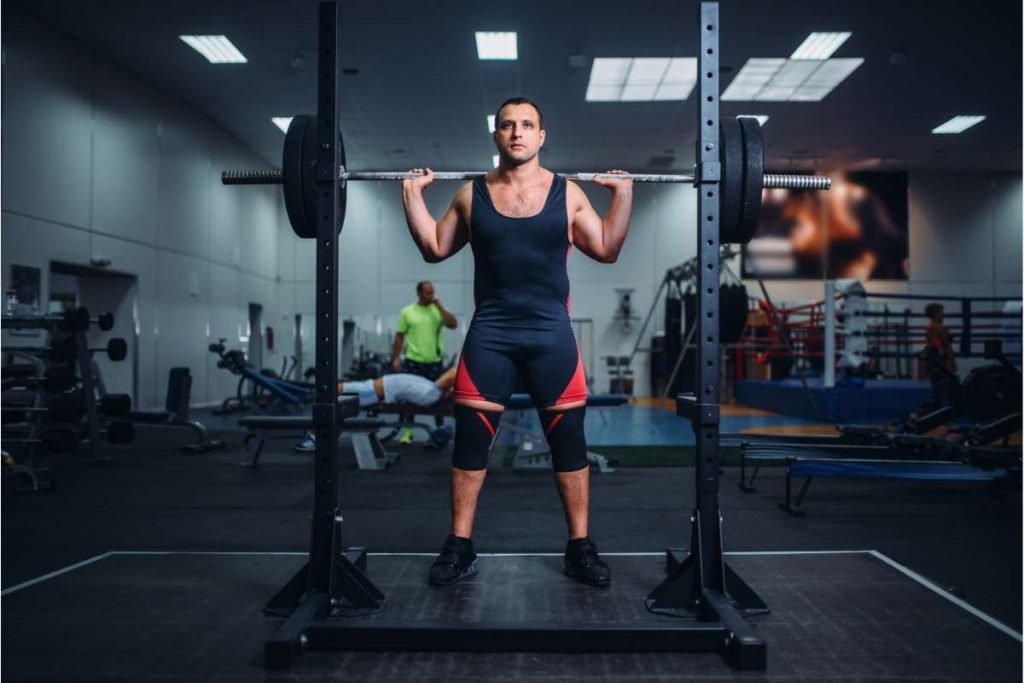
This powerbuilding workout program combines the most effective methods of strength-building and muscle growth.
There are variations for newer trainees and more advanced lifters, so pick one based on your experience.
The most important things to keep track of during this program are your weight on the compound lifts – the big three as well as military press and barbell row.
Every time you complete the five sets of five (or 6×3 in advanced) make sure you progress the weight by 5lbs (or 2.5kg).
If you continue to do this for the12 weeks, you could increase your weight on these lifts by up to 90lbs (45kg).
See the pro tips under the programs for how to maximize your success with the powerbuilding programs.
Beginner Powerbuilding Program
This beginner powerbuilding workout involves two sessions, to be alternated three days per week.
This means that your schedule will look like this:
| Day | Week 1 | Week 2 |
| Monday | Workout 1 | Workout 2 |
| Wednesday | Workout 2 | Workout 1 |
| Friday | Workout 1 | Workout 2 |
Again, work on progressing your weight in the big lifts first. Don’t skip rest periods if you’re plateauing or losing form.
Stay consistent over the 12 weeks, and this will build you a solid foundation of strength and size.
Workout 1
Warm-Up: General warm-up 5 min, 10 leg swings, 10 torso twists, 10 arm circles, 2 warm-up sets squats/bench press.
| Exercise | Sets x Reps | Rest |
| Squat | 5×5 | 3-5 mins |
| Bench Press | 5×5 | 3-5 mins |
| Barbell Row | 5×5 | 3-5 mins |
| Lying Triceps Extension | 3×8-10 | 2-3 mins |
| Barbell Curl | 3×8-10 | 2-3 mins |
Estimated Workout Duration: 1hr – 1:15 including warm-up
Workout 2
Warm-Up: General warm-up 5 min, 10 leg swings, 10 torso twists, 10 arm circles, 2 warm-up sets deadlift/military press.
| Exercise | Sets x Reps | Rest |
| Deadlift | 5×5 | 3-5 mins |
| Military Press | 5×5 | 3-5 mins |
| Incline dB Curl | 3×8-10 | 1-2 mins |
| OH Triceps Extension | 3×8-10 | 2-3 mins |
| Standing Calf Raise | 3×12-15 | 1-2 mins |
Estimated Workout Duration: 45 – 60 min including warm-up
Advanced Powerbuilding Program
The advanced powerbuilding program changes things up a little.
This powerbuilding workout is a 4-day split, modifying the 3-day PPL formula.
While still keeping the focus on strength, these sessions provide more volume to grow the major muscle groups.
There are focus sessions for chest, legs, back, and shoulders, with arms and calves added as well.
The schedule for this program is as follows:
| Day | Week 1 |
| Monday | Workout 1 |
| Wednesday | Workout 2 |
| Thursday | Workout 3 |
| Friday | Workout 4 |
Don’t hesitate to include an additional rest day if you feel overly sore or fatigued.
Progress the weight in the big lifts slowly, and also focus on pushing out those extra reps on the final sets of hypertrophy exercises.
Workout 1: Horizontal Push
Warm-Up: General warm-up 5 min, 10 torso twists, 10 arm circles, 2 warm-up sets bench press.
| Exercise | Sets x Reps | Rest |
| Bench Press | 6×3 | 3-5 mins |
| Incline Bench | 3×6-8 | 2-3 mins |
| Weighted Dips | 3×8-10 | 2-3 mins |
| Cable Chest Fly | 3×10-12 | 1-2 mins |
Estimated Workout Duration: 1hr – 1:15 including warm-up
Workout 2: Legs
Related: Why Are My Legs So Skinny
Warm-Up: General warm-up 5 min, 10 leg swings, 10 torso twists, 2 warm-up sets squats.
| Exercise | Sets x Reps | Rest |
| Squat | 6×3 | 3-5 mins |
| Split Squat | 3×6-8 each side | 2-3 mins |
| Leg Extension | 3×10-12 | 1-2 mins |
| Standing Calf Raise | 3×10-12 | 1-2 mins |
Estimated Workout Duration: 1hr – 1:15 including warm-up
Workout 3: Vertical Push
Warm-Up: General warm-up 5 min, 10 torso twists, 10 arm circles, 2 warm-up sets military press.
| Exercise | Sets x Reps | Rest |
| Military Press | 6×3 | 3-5 mins |
| Arnold Press | 3×6-8 | 2-3 mins |
| Lateral Raise | 3×10-12 | 1-2 mins |
| OH Cable Tricep Extension | 3×10-12 | 1-2 mins |
Estimated Workout Duration: 1hr – 1:15 including warm-up
Workout 4: Pull
Warm-Up: General warm-up 5 min, 10 leg swings, 10 torso twists, 10 arm circles, 2 warm-up sets deadlift.
| Exercise | Sets x Reps | Rest |
| Deadlift | 6×3 | 3-5 mins |
| Barbell Row | 3×6-8 | 2-3 mins |
| Lat Pulldown | 3×8-10 | 2-3 mins |
| Barbell Curl | 3×8-10 | 2-3 mins |
Estimated Workout Duration: 1hr – 1:15 including warm-up
12 Week Powerbuilding Program with PDF
Pro Tips for Maximizing your Powerbuilding Program Results
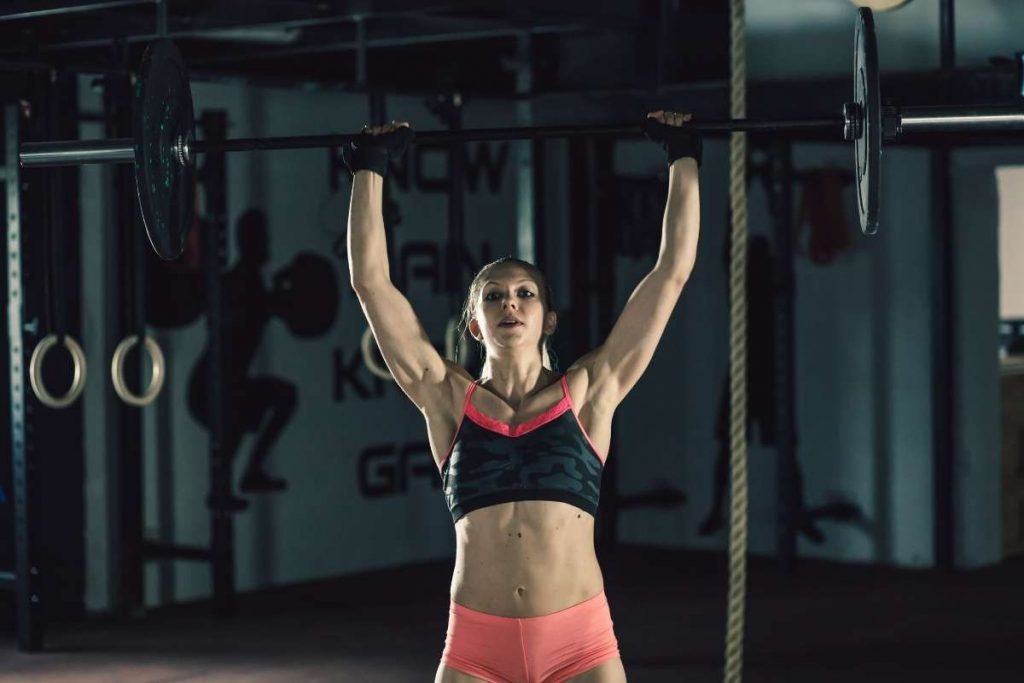
Powerbuilding Diet and Nutrition
Related: 3000 Calories Meal Plan With PDF
Powerbuilding programs are usually combined with diets involving a calorie surplus. A surplus helps fuel performance and enhance muscle growth.
If your goal is weight loss, you can still perform this program. Beginners – or those with a lot of weight to lose – will still experience strength and muscle gains from these programs.
For those with more experience, however, you may find your strength increases become diminished without adequate calorie intake to fuel the workouts.
The standard nutrition rules apply in a powerbuilding program – calorie surplus, plenty of protein, carbs for energy, and fat for hormone balance.
Track Your Progress
Powerbuilding workout programs are relatively simple in terms of tracking.
As long as your training is consistent and your nutrition and recovery sufficient, your progress should be steady.
Expect to see your numbers increase on the squat, deadlift, bench, overhead press, and row.
For the hypertrophy-focused movements, focus more on squeezing out an extra rep on the final sets.
Use the scales, a tape measure, and the mirror to monitor your gains in terms of your physique.
If your progress slows or stops during the 12 weeks, consider tweaking your diet, improving your rest, or even including a deload week and continuing from there.
Muscle Recovery
Recovery is paramount in a powerbuilding program to ensure continued progress.
Even when training different muscle groups, the central nervous system also needs time to recover to produce the strength needed for the big lifts.
Diet, sleep, mobility work, and tracking your progress will ensure you recover between workouts and are able to keep pushing forward.
Frequently Asked Questions
What’s the best powerbuilding program?
The best powerbuilding programs will include an optimized combination of powerlifting bodybuilding exercises.
The workouts in this article focus on the big lifts first while you’re fresh with some extra stimulus to isolate muscle groups afterward.
This combination will provide the environment needed for your muscles to both get stronger and grow in size.
Do powerbuilding programs work?
Powerbuilding programs combine maximal strength training with accessory work to build muscle.
While other programs periodize hypertrophy and strength training, they can certainly be combined when done correctly.
Powerbuilding programs are great for general fitness enthusiasts as you can progress in multiple metrics at once.
Give the programs in this article a try, eat plenty of good food, get lots of sleep, and see the results for yourself!
Is powerbuilding effective for muscle gain?
While it may seem that the emphasis in these powerbuilding workouts is on strength, increasing muscle mass is still very much present.
Getting stronger isn’t essential to growing muscle, but the two definitely work better together than in isolation.
Just look at the top bodybuilders in the world to see their numbers on the big lifts.
Being strong helps with getting bigger, and vice versa.
Final Thoughts
So, what do you think about our powerbuilding guide and programs? Is this the training method for you?
Let us know which powerbuilding program you intend to try – or your previous results from powerbuilding training – in the comments.
If you know anyone looking to increase strength and size, share these powerbuilding workouts with them as well.

